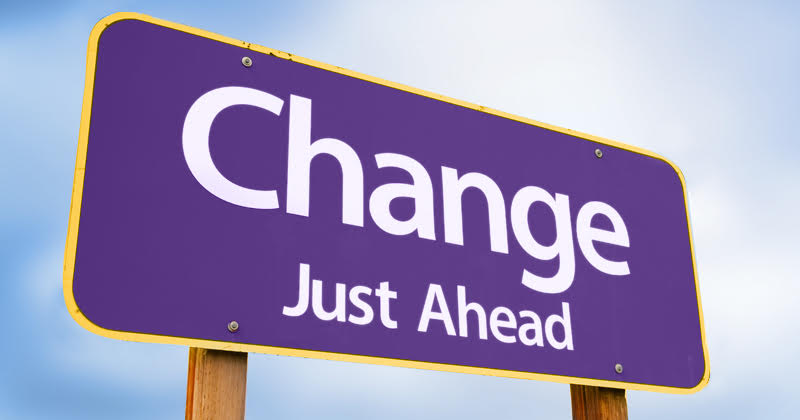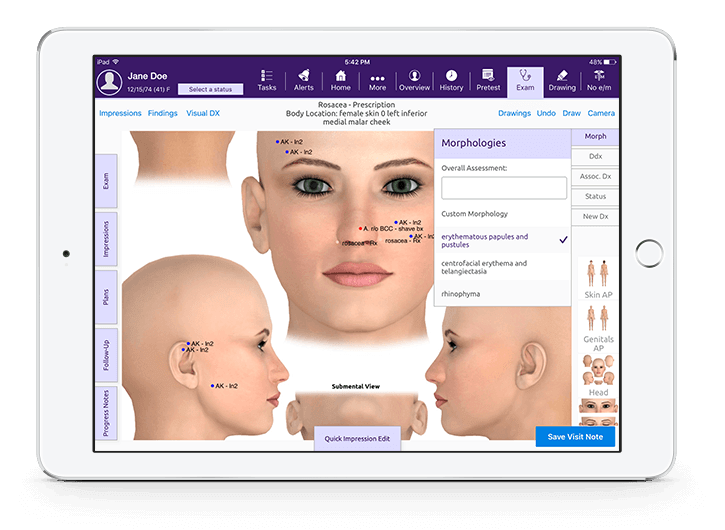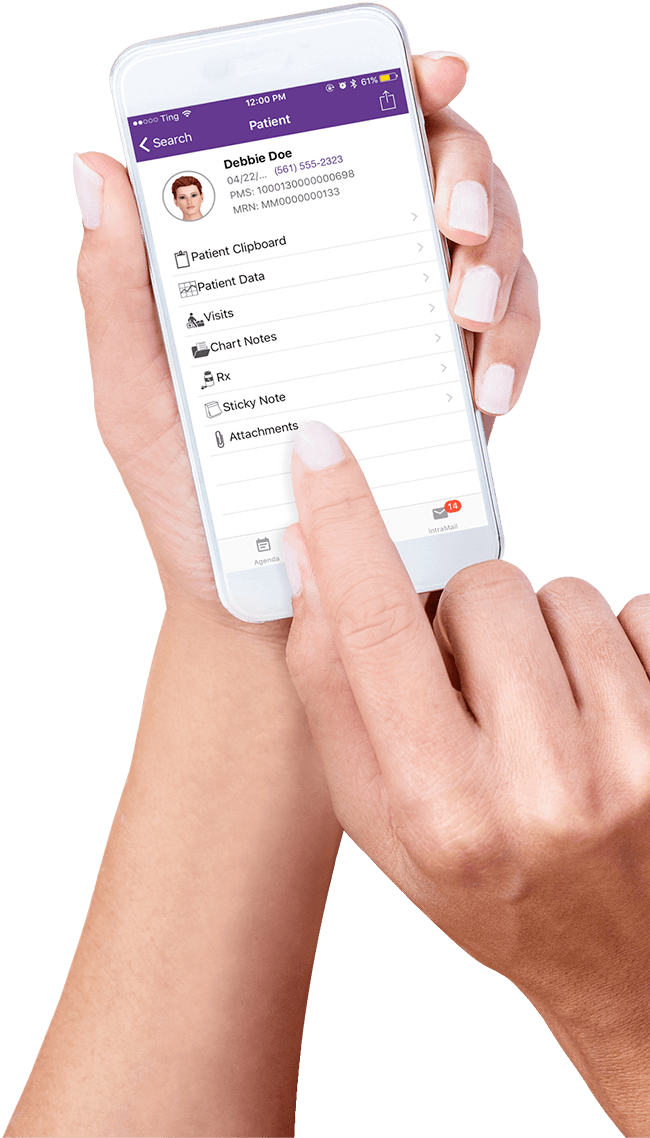Signs You May Need to Re-evaluate Your Dermatology EHR

Has the time come to switch EHR vendors?
Settling for mediocre isn’t usually the best option since that means a better choice exists. So when it comes to your dermatology electronic health record (EHR) system, don’t settle for subpar dermatology software knowing a better fit is available. Based on my experience as both a practicing dermatologist, as well as the Senior Medical Director of Dermatology at Modernizing Medicine, I wanted to share with you some of the top signals that often indicate the time to make a switch to a new dermatology EHR system has arrived. Some of those signals include:
- No cloud EHR option
- EHR usability challenges
- Workflow disruptions
- Lack of updates and enhancements
- Dismissive customer support
- EHR system offering only
Have you made an EHR switch? What were some of the determining factors on your list that prompted a change?
No Cloud EHR Option
 You’ve probably heard the terms “server” and “cloud” tossed around quite often when it comes to technology, particularly when it relates to dermatology EHR systems. In order to understand why a cloud EHR is typically the better option, let’s take a look at both.
You’ve probably heard the terms “server” and “cloud” tossed around quite often when it comes to technology, particularly when it relates to dermatology EHR systems. In order to understand why a cloud EHR is typically the better option, let’s take a look at both.
With server-based software, in order to use a software program your computer must connect to a centralized computer – the server – which runs the software and distributes it to computers like yours. This means that you would be responsible for managing and supporting hardware, security, backups, hosting, interfaces, performance and database software. In my opinion, that translates into more headaches and usually increased costs, too. Another limitation, of server-based software, exists from a data perspective. When all of your data is locked in a local server it can be difficult, if not impossible, to easily compare your data to other providers in your field.
Now let’s look at cloud-based software, which is my personal preference for dermatology software. Cloud software, known as Software as a Service (SaaS), refers to the delivery model where the vendor hosts the software on remote servers, and you, as a client, access a multi-user environment through the Internet. The vendor can host the software at a comparatively low cost compared to costs with a server-based model. So what does this mean for you? Less hardware for you to buy, set up and manage and easier access to your data when remote. In short, fewer headaches for you and often reduced costs as compared to the aforementioned server-based model.
EHR Usability Challenges
 Do you find yourself facing a computer screen more than your patient? Struggling to know where to click? Do you have to re-enter the same information over and over? When you’re away from the office, can you easily access your patient’s medical information safely and securely?
Do you find yourself facing a computer screen more than your patient? Struggling to know where to click? Do you have to re-enter the same information over and over? When you’re away from the office, can you easily access your patient’s medical information safely and securely?
Look for a dermatology EHR that offers a native iPad application, as this will give increased ability to face your patients as you document during an exam and even show patients visuals as you talk through certain procedures or look at before-and-after photos. When it comes to documenting, dermatology EHRs with an adaptive learning engine will start to recognize your preferred methods and even suggest your top diagnoses and treatments that should help save time. A cloud EHR also gives you added mobility. Ask about the ability to access patient records through an app on your phone, too, which can come in handy when you’re away from the office for a conference or vacation.
EHR vendors should take a user-centered approach when it comes to updating software, so certainly ask how the company focuses on the user experience and how clients are included the process.
Workflow Disruptions
 If you find you and your staff spend more time customizing templates and figuring how to interact with your dermatology EHR, making a change may be the best option for your practice. I have often heard peers talk about how their dermatology software impedes patient care and forces them to spend more time interacting with a laptop or desktop than with their patient. This can lead to frustrated physicians and staff, poor patient flow and a non-patient focused practice.
If you find you and your staff spend more time customizing templates and figuring how to interact with your dermatology EHR, making a change may be the best option for your practice. I have often heard peers talk about how their dermatology software impedes patient care and forces them to spend more time interacting with a laptop or desktop than with their patient. This can lead to frustrated physicians and staff, poor patient flow and a non-patient focused practice.
And who wants a dermatology EHR that wasn’t built specifically for dermatologists? Just like a good pair of running shoes, one-size does not fit all when it comes to EHR systems. Make sure you find one that that has built-in dermatology knowledge at your fingertips.
Some specifics to look for may include:
- An intuitive touch-based EHR solution
- Automated notes and bills
- Built-in dermatology ICD-10 codes
- Dermatology MIPS and MACRA functionality
- Dermatology-specific chief complaints
- Dermatology-specific treatment plans and procedures
- Capturing structured (actionable) data at the point of care
- Creation of Protocols (master-visits)
Lack of Updates and Enhancements
Has your current dermatology software come to a standstill when it comes to updates and keeping up with industry changes? Can you remember the last time your EHR vendor released an update other than a bug fix? Or how about having your feedback and suggestions thoughtfully responded to? I think you know where I am going with this.
Your dermatology EHR software should evolve over time. When investigating EHR options, learn about the most recent updates made and what’s on the horizon. Inquire about how feedback from clients impacts the software’s roadmap and future enhancements. Your practice’s EHR system of choice should grow and transform with you just as your practice will over the years. Asking to speak with current clients can help paint a picture of how the company has evolved (or not) over the years.
Dismissive Customer Support
Lack of responsiveness paired with unfriendly and unhelpful customer support typically rubs customers the wrong way and can discourage you from using a product or service that you once enjoyed. The EHR vendor you decide to work with should have a clear process for submitting requests, contacting support and provide responsive and helpful assistance.
In addition to having a responsive and helpful support team, learn about other tools the company may have in place. A searchable knowledge-base, scheduled webinars on new product features, various on-going training options and an annual users conference can set one company apart from the rest.
EHR Offering Only
You’ll find that some vendors only offer an EHR system so you’ll have to investigate additional companies for inventory management, dermatology practice management software, revenue cycle management services, an analytics platform and telehealth. This means more bridges, communication challenges and more time managing requests and figuring out who to go to for what. All of that equals inefficiencies when it comes to your time and money.
The more you can consolidate the vendors you work with, the better for a handful of reasons. When one vendor provides a suite of solutions, the software solutions work seamlessly and you don’t have to rely on bridges, for instance between your EHR and practice management software. If you have a challenge or question, you typically will have a main point of contact and only one company to get in touch with. If you opt for multiple solutions from one vendor, you may be able to receive a better pricing structure as well. The fewer hands in the pot the better, and a vendor with an all-in-one solution can really help you to streamline the clinical, operational and financial aspects of your practice.
A List of ‘No’s’
If you answer ‘no’ to a majority of the items below, you may need a new dermatology EHR in the near future.
- Is the EHR system designed for dermatology?
- Does it have built-in dermatology diagnoses, treatment options and coding functionalities?
- Does the EHR meet the workflow requirement of your dermatology practice?
- Can you touch and swipe on a native iPad EHR interface instead of typing or having to use a desktop computer?
- Does your dermatology EHR have a built-in MIPS intelligence platform?
- Is it a true cloud-based EHR platform?
- Does it provide you with mobile access from virtually any location with a secure internet connection?
- Does the company offer solutions that go beyond its dermatology EHR system?
- Do you have the ability to use the vendor’s patient portal and an iPad check-in kiosk that integrate with its EHR system?
- Is the support team responsive to your needs as a customer?
- Does the EHR company have a positive reputation in the market? What about from its current clients?
- Can they provide a list of client references?
- Is the company financially stable?
If you’re seeking additional resources, The Office of the National Coordinator for Health Information Technology has its list of considerations for when it may be time to make a switch. In short, if the pros of opting for a new dermatology EHR system outweigh the cons of your current system, it may be time to flip the switch and take a leap of faith and start the process of evaluating other options that are far better than mediocre.





